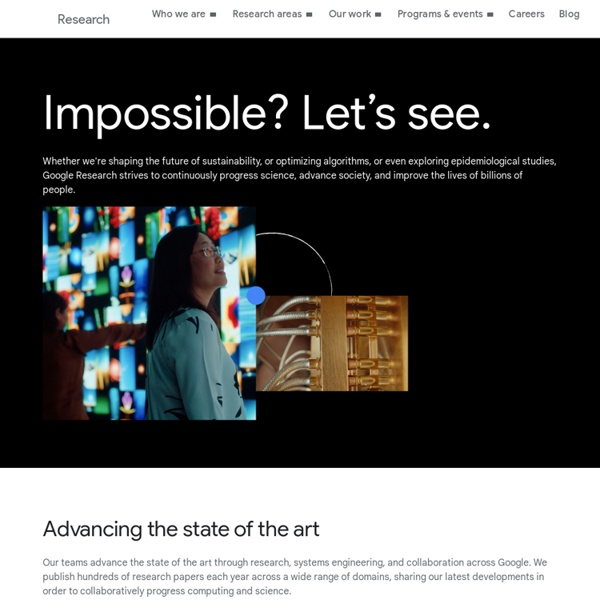Zoom
Trash
Related:



PowerMeter We launched Google PowerMeter as a free energy monitoring tool to raise awareness about the importance of giving people access to their energy information. PowerMeter included key features like visualizations of your energy usage, the ability share information with others, and personalized recommendations to save energy. We partnered with device manufacturers and utilities around the world. Titan: Distributed Graph Database Titan is a scalable graph database optimized for storing and querying graphs containing hundreds of billions of vertices and edges distributed across a multi-machine cluster. Titan is a transactional database that can support thousands of concurrent users executing complex graph traversals in real time. In addition, Titan provides the following features: Download Titan or clone from GitHub. Read the Titan documentation and join the mailing list. <dependency><groupId>com.thinkaurelius.titan</groupId><artifactId>titan-core</artifactId><version>1.0.0</version></dependency><!
GATE - www.tenpointer.com GATE is one of the toughest examinations in the country designed in a format that tests students' ability in understanding and applying the concepts in problem solving. GATE aspirants must keep in mind that memorization and endless hours of slogging alone will not fetch them an 'All India Rank.’ Also, Most aspirants consider GATE as only a means for gaining ME/MTech admission. However, GATE scores enable them to join for Research programmes (MSc, PhD) in IISc/IITs with an attractive scholarship and also provide eligibility to attend PSU job interviews in India. Serious preparation for GATE will help them to crack other technical exams like DRDO-SET, JTO and IES easily One cannot crack GATE by:
Publications by Googlers Google publishes hundreds of research papers each year. Publishing is important to us; it enables us to collaborate and share ideas with, as well as learn from, the broader scientific community. Submissions are often made stronger by the fact that ideas have been tested through real product implementation by the time of publication. We believe the formal structures of publishing today are changing - in computer science especially, there are multiple ways of disseminating information. We encourage publication both in conventional scientific venues, and through other venues such as industry forums, standards bodies, and open source software and product feature releases. Open Source
RDF 1.1 Concepts and Abstract Syntax Abstract The Resource Description Framework (RDF) is a framework for representing information in the Web. This document defines an abstract syntax (a data model) which serves to link all RDF-based languages and specifications. The abstract syntax has two key data structures: RDF graphs are sets of subject-predicate-object triples, where the elements may be IRIs, blank nodes, or datatyped literals. They are used to express descriptions of resources. RDF datasets are used to organize collections of RDF graphs, and comprise a default graph and zero or more named graphs.
Technology The technology behind Google's great results As a Google user, you're familiar with the speed and accuracy of a Google search. How exactly does Google manage to find the right results for every query as quickly as it does? The heart of Google's search technology is PigeonRank™, a system for ranking web pages developed by Google founders Larry Page and Sergey Brin at Stanford University.
Ontotext Ontotext is a Bulgarian software company headquartered in Sofia. It is the semantic technology branch of Sirma Group. Its main domain of activity is the development of software products and solutions based on the Semantic Web languages and standards, in particular RDF, OWL and SPARQL. Co-developer[edit]
List of Google products Web-based products[edit] Search tools[edit] Advertising services[edit] Google Search Google Search (or Google Web Search) is a web search engine owned by Google Inc. Google Search is the most-used search engine on the World Wide Web,[4] handling more than three billion searches each day.[5][6] The order of search on Google's search-results pages is based, in part, on a priority rank called a "PageRank". Google Search provides many options for customized search, using Boolean operators such as: exclusion ("-xx"), alternatives ("xx OR yy"), and wildcards ("x * x").[7]
Google Url Shortener Posted by Michael Hermanto, Software Engineer, Firebase We launched the Google URL Shortener back in 2009 as a way to help people more easily share links and measure traffic online. Since then, many popular URL shortening services have emerged and the ways people find content on the Internet have also changed dramatically, from primarily desktop webpages to apps, mobile devices, home assistants, and more. To refocus our efforts, we're turning down support for goo.gl over the coming weeks and replacing it with Firebase Dynamic Links (FDL). FDLs are smart URLs that allow you to send existing and potential users to any location within an iOS, Android or web app. We're excited to grow and improve the product going forward.